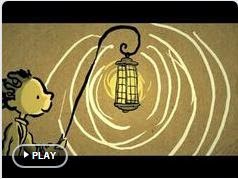It's back to school time again! As we classroom teachers and literacy leaders are preparing to begin a new school year, we spend a lot of our own money. Agreed? Who couldn't use a post with links to free materials? Today's post is for you. Anyone that has followed me for awhile on Facebook knows how much I love sharing reading jackpots.
What is a Reading Jackpot? Here's my criteria:
1. Found online.2. Must be mostly free.
3. Has to have so many valuable reading resources for parents and educators, that there's too many to count. You feel like you hit the jackpot , because it's too good to be true.
Trust me. You WILL want to bookmark these hidden (or not so hidden) gems, and share them with friends and work colleagues. Enjoy!
1. Readworks.org
Read Works is filled with comprehension lessons organized by grade level, skill and strategy. There's a large collection of high interest printable passages and questions, also organized by grade level, skill and strategy. All you need to do is sign up for free and you're ready to go.
2. FCRR
The Florida Center for Reading Research has created an enormous database of lessons, and games organized by grade level and skill. Every lesson includes the printables you'll need, so there's no recreating anything! I love how the font on every printable is kid-friendly.
3. Carl's Corner
This is a little hidden gem I found during my OG training. I love Cherry Carl's printable board games for spelling and phonics practice, and have used many of them, but there's so much more. Go into the website directory and you'll find it all. If you teach Scott Forseman Reading or need a SMARTBOARD lesson, there's activities for those too. All of her resources are free!
4. The Literacy Shed
One word for this site: AMAZING. When I first posted about The Literacy Shed over the summer, I was blown away. So much talent has gone into created these videos and lessons for visual literacy. I watched The Flying Book Shed, and literally shed a tear. The site is dedicated to providing high quality, award-winning Literacy lessons, videos, and book suggestions for teachers.
Watch The Lighthouse by clicking the link below.
5. Reading Resource
Steve Griffin and Kathy Appel strive to provide excellent dyslexia resources for parents and/or teachers. MANY of the resources are free, but they have some products and apps for purchase that are well worth checking out. The site is well organized, and easy to navigate I've recently been using their new app, Sight Word Flip It and highly recommend it.
6. Reading Rockets
This is my old fav! If you haven't been to Reading Rockets before, prepare to get lost for several hours. This is a great go-to site for anything literacy related. Years ago, I first used it with my students to show author videos. Now I include their widgets on my blog (on the right sidebar, btw) and check their page regularly for new articles and resources. The site provides a nice balance of parent and/teacher resources. Their summer activities and book suggestions were fabulous. You'll find plenty of freebies on this site too!
Finally, I invite you all to enjoy Keepers Of The Flame, an inspirational video for educators. Click the link below to view it. Have a wonderful year, teachers. You truly are the keepers of the flame. :)
Do you have a reading jackpot? Please comment below. Thank you!







































